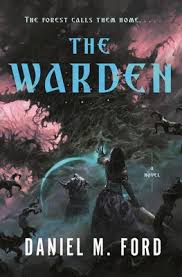Chapter III The Bishop of Barchester
byChapter III begins with a calm evening at the hospital, where music fills the air and elderly residents quietly enjoy the peaceful atmosphere. Mr. Harding plays his beloved cello, unaware that John Bold is drawing closer, carrying questions that might shake the foundation of this familiar harmony. The gentle surroundings, with the simple comforts of routine and friendship, make Bold’s approaching confrontation feel especially intrusive. Inside the walls of the hospital, there is a sense of dignity—not grand, but sincere—where Harding’s leadership is felt more through kindness than through authority. Bunce, one of the senior bedesmen, listens to the music with deep appreciation, representing the trust that has long existed between the warden and his wards.
When Bold finally arrives, the calm is not immediately disturbed, but the tension simmers underneath their polite exchange. Bold’s respect for Mr. Harding complicates his mission; his questions are framed more in concern than accusation. He explains his investigation not as a personal attack but as a public duty, though even he seems unsure where one ends and the other begins. Mr. Harding listens with the patience of someone accustomed to judgment but unprepared for betrayal. He responds with dignity, neither defensive nor evasive, but it is clear that Bold’s words have unsettled him. Integrity, to Harding, is not a matter of policy but of personal principle.
As their conversation draws to a close, a subtle shift begins. Bold, despite his mission, cannot ignore the human cost of his inquiry. The look in Harding’s eyes tells a story no legal document can match. It is the story of a man who has given his time, his care, and his presence to those society has long forgotten. Reform, in Bold’s view, must serve justice—but in Harding’s world, justice without compassion can feel like cruelty. The contrast between legal correctness and lived morality becomes strikingly clear. Bold leaves not in triumph, but with uncertainty, aware that what he’s begun may wound more than heal.
Later that evening, Mr. Harding reflects alone. He questions not the letter of the law but the spirit in which it is used. The suggestion that he might have benefited unfairly from the hospital’s endowment disturbs him deeply, though no wrongdoing has been proven. What weighs on him is the possibility that others may see him as self-serving, or worse, as unjust. He recalls the wishes of Hiram, the hospital’s founder, and wonders if modern interpretation has truly honored that original vision. Even the bishop’s advice, well-meaning though it is, feels detached—more about preserving appearances than addressing deeper truths.
Mr. Harding’s pain is not rooted in fear of legal loss but in the thought that his reputation for fairness could be tarnished. In a time when public perception carries immense weight, especially for church figures, his role is more than administrative. It is symbolic. He understands that how he responds will not only shape his future but also impact how his position, and perhaps the church itself, will be viewed. The integrity he values must now be defended not with words, but with choices. Bold’s visit has awakened a quiet crisis in Harding’s conscience that cannot be easily dismissed.
The narrative also draws subtle connections between personal and public spheres. With Eleanor and Bold growing closer, the looming conflict risks not just institutional damage, but emotional cost as well. Relationships, like reputations, are vulnerable to suspicion. Harding’s sense of loss is intensified by the thought that this legal inquiry may sever the bond between his daughter and the man who might otherwise have joined their family. Trollope uses this interplay to remind readers that justice, when applied without care, can have collateral damage. The issues raised in the hospital are not just legal—they are human, and deeply felt.
This chapter invites readers to consider how modern ideals can clash with traditional virtues. Reformers like Bold carry the torch of change, but figures like Harding hold the weight of continuity. Neither is wholly right or wrong, yet both must navigate consequences they cannot fully control. Trollope presents no simple solution, only a carefully drawn portrait of people doing their best under difficult conditions. In doing so, he asks us to think not only about what is fair, but what is kind, and whether the two always align.

